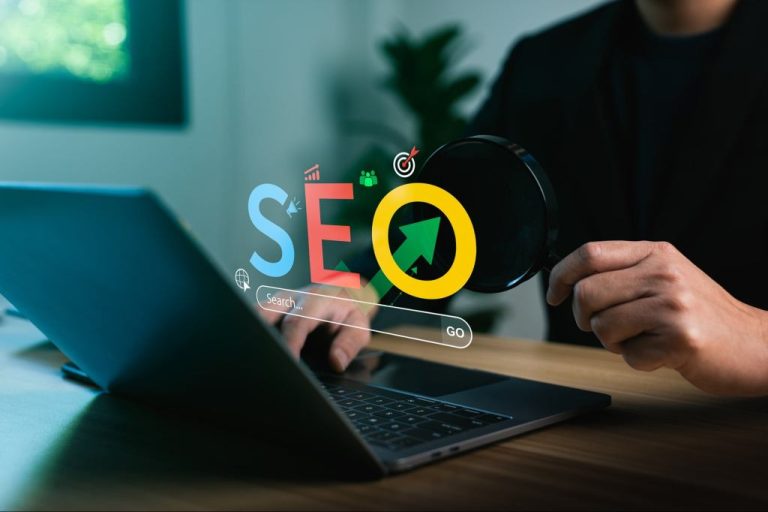Entrepreneur
Key Takeaways
- AI is rapidly transforming how people discover companies, demanding a new approach to search visibility.
- Traditional SEO alone is no longer enough — brands must adapt or risk disappearing from AI-driven results.
For years, ranking high on Google’s results page was considered the holy grail for companies chasing visibility. But that landscape is shifting. Consumers are turning to AI tools — like ChatGPT, Claude and Gemini — instead of traditional search engines to find information. That means the old rules of SEO no longer apply.
To stay visible, companies must adapt their strategies to appear in AI-generated search results. And one of the most effective — and overlooked — ways to do that? Public relations.
Why PR now plays a critical role in AI SEO
Traditional SEO focused on optimizing websites, blogs and other owned content to appear at the top of search engine results pages (SERPs). But AI-driven search doesn’t show users a list of clickable links. Instead, it delivers a synthesized, conversational answer — often without citing the source.
These results are powered by large language models (LLMs) trained on vast datasets of publicly available content. The more credible and consistent the mentions of your company across the web, the more likely you are to be included in these AI-generated responses.
That’s where PR comes in. It positions founders and companies as trustworthy authorities by increasing the volume and credibility of third-party content — the kind of content AI tools are most likely to learn from and quote.
Related: Generative AI Is Changing SEO Forever — Here’s What You Need to Know to Stay Competitive
How AI search differs — and why it matters
AI tools don’t serve results the way Google does. There’s no ranking to climb. No meta descriptions to write. Instead, LLMs generate responses based on what they’ve read across the internet — and they favor well-established, widely cited sources.
Even when AI overviews are embedded in Google results, they still impact clicks. A recent Pew Research Center report found that when Google shows an AI summary, users are almost half as likely to click on any link. This reinforces the need to be part of the AI-generated response itself, not just the links it pushes down the page.
And unlike Google’s crowded SERPs, AI-generated answers typically highlight just a few companies. Getting included in that short list is the new visibility play.
Optimizing for AI: what works now
In traditional SEO, keywords were king. With AI, credibility and repetition across diverse sources are what move the needle.
Start by asking ChatGPT (or another AI tool) who the top companies in your industry are. The results — and the reasoning behind them — will show you exactly what kind of information LLMs are looking for: strong reputations, media recognition, social proof and consistency across the web.
To train AI to see your company as a leader, you need to create and distribute content that reinforces your position. That means:
- Publishing expert commentary and thought leadership
- Issuing press releases and getting coverage in reputable outlets
- Earning mentions in third-party blogs, newsletters, and directories
- Sharing that coverage across social channels to increase its reach
This approach, often referred to as Search Everywhere Optimization, increases your digital footprint and boosts your chances of being picked up by AI systems.
Related: Is Your SEO Strategy Ready for the AI Search Engine Takeover? Act Now — or Risk Getting Left Behind.
Why PR supercharges AI visibility
PR does two things that are critical in the AI search era:
- It builds authority. When your company is consistently mentioned by respected sources, AI systems learn to associate your name with expertise and trustworthiness.
- It expands your data footprint. LLMs need repetition and consensus to trust information. PR ensures there’s enough high-quality content about your company for AI to recognize it, understand it and include it in responses.
Want to be known as an award-winning company? Don’t just mention it once on your website. Promote it in blog posts, press releases, LinkedIn bios, customer communications and third-party media. AI learns by pattern recognition — the more consistently you promote a message, the more likely it becomes part of your AI identity.
Measuring your AI visibility
To assess your current visibility in AI search, start with a simple Google query: search your company name and see what comes up. Are you appearing in diverse sources — not just your own website?
Look for:
- Media coverage
- Blog mentions
- Customer reviews
- LinkedIn posts
- Reddit threads
- YouTube videos
- Business directories
The broader and deeper your online presence, the more likely AI tools will pull you into their results.
And don’t forget on-page optimization. If you want to be known for something specific — like being a fast-growing startup or a category innovator — say it consistently across bios, pitches, and media placements.
The bottom line
AI search isn’t killing SEO — it’s transforming it. Companies that embrace this shift and invest in building a credible, well-distributed presence across the web will be the ones who stay visible in the new era of search.
If you want AI to recommend your company tomorrow, you need to start training it today.
Key Takeaways
- AI is rapidly transforming how people discover companies, demanding a new approach to search visibility.
- Traditional SEO alone is no longer enough — brands must adapt or risk disappearing from AI-driven results.
For years, ranking high on Google’s results page was considered the holy grail for companies chasing visibility. But that landscape is shifting. Consumers are turning to AI tools — like ChatGPT, Claude and Gemini — instead of traditional search engines to find information. That means the old rules of SEO no longer apply.
To stay visible, companies must adapt their strategies to appear in AI-generated search results. And one of the most effective — and overlooked — ways to do that? Public relations.
Why PR now plays a critical role in AI SEO
Traditional SEO focused on optimizing websites, blogs and other owned content to appear at the top of search engine results pages (SERPs). But AI-driven search doesn’t show users a list of clickable links. Instead, it delivers a synthesized, conversational answer — often without citing the source.
The rest of this article is locked.
Join Entrepreneur+ today for access.
Read the full article here









